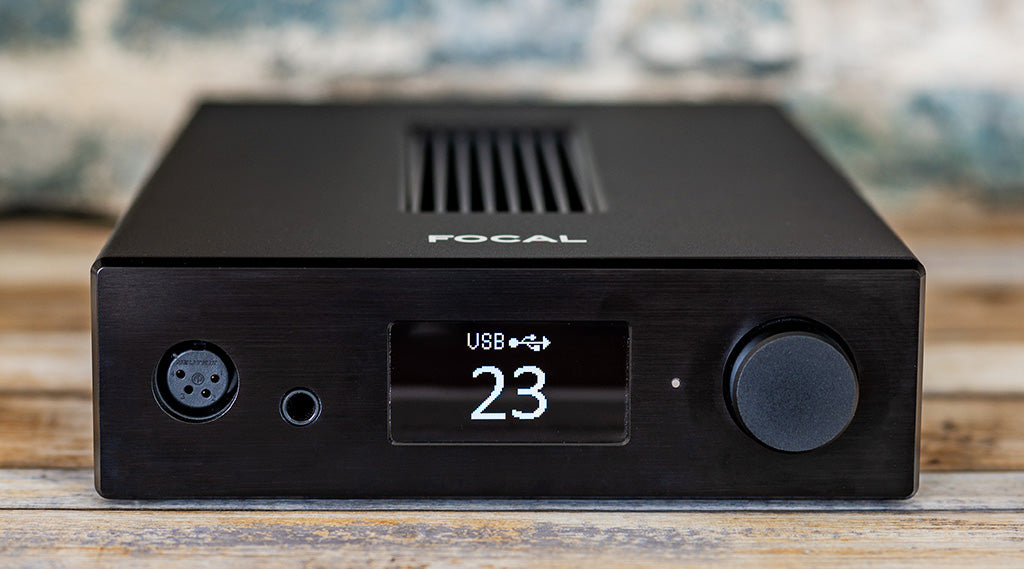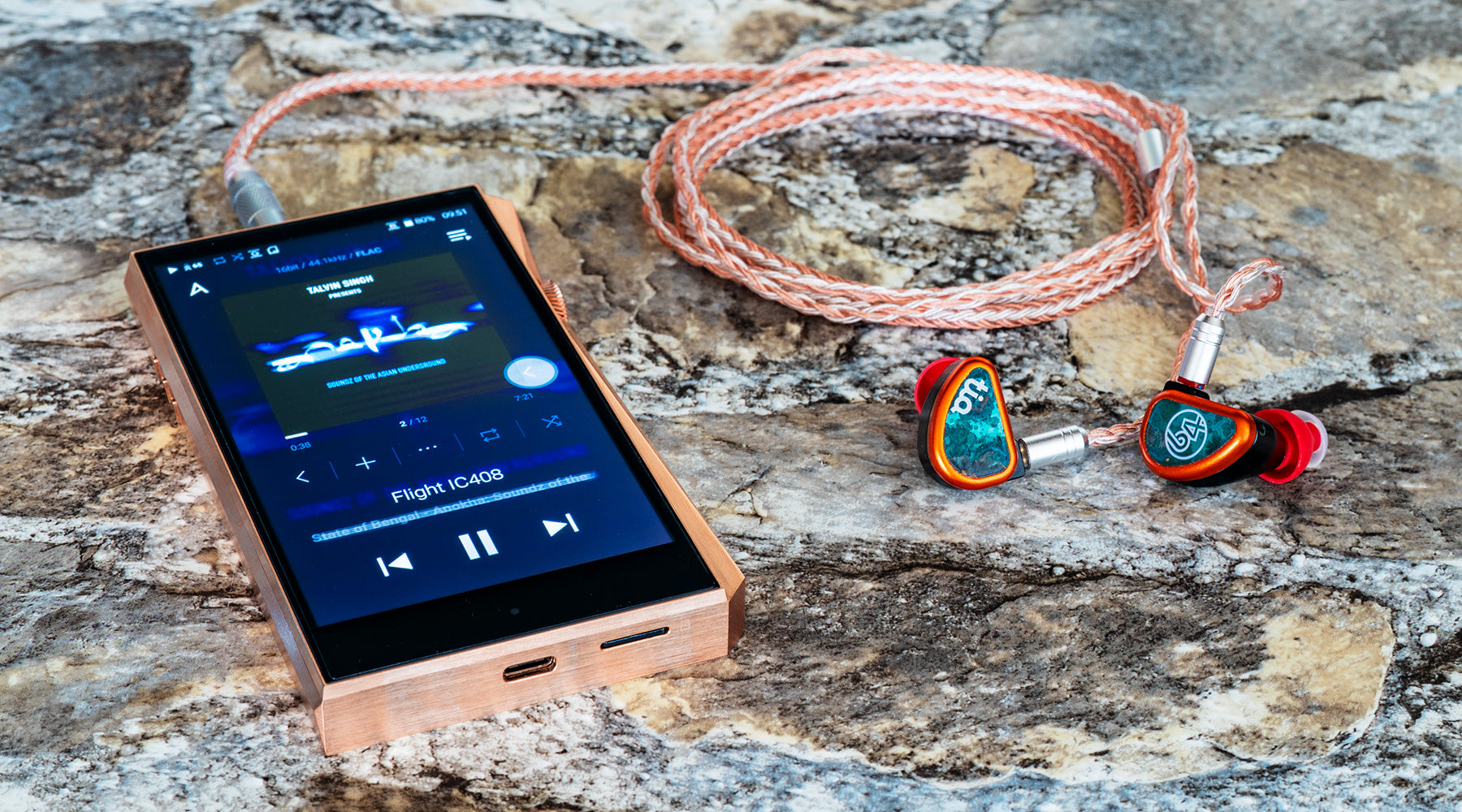Review written by Ian Dunmore (@Torq)
Introduction
The Arche is Focal’s first source and amplifier offering for the world of audiophile headphone listening. It is closely matched to Focal’s line of high-end headphones, and in fact has pre-set configuration options for each of them, intended to get the best match.

This will be a “stream-of-consciousness” or “episodic” review of the Arche, which is on kind-loan from “The HEADPHONE Community” as part of their “Community Preview Program”. This introduction is based on my initial exposure to the unit, a couple of months ago, with subsequent episodic updates (see "Further Thoughts, Comments and Discussion", at the end of this post) being based on having the unit back in my hands for a more extended listen.
Features & Functionality
In addition to the very obvious, included, and removable, headphone stand (inspired by the Focal logo), Arche is a simple, elongated, black metal affair.
Unlike many “all in one” or DAC/amp solutions, Arche has both digital and pure analog inputs. You can feed the DAC (a dual-AKM4490 based unit), via USB or S/PDIF via Coax or TOSLINK, but it also has a true analog RCA input that directly feeds the analog amplification stages. If you have an additional source, such as a turntable, or just want to use a different DAC with it, this is a very welcome feature.
The amplifier works in two, selectable, modes, a voltage-drive mode (which is what most amps are) and a “hybrid” mode. Gain is also adjustable. The pre-sets for different headphones adjust these settings to get the optimal performance for each one. Output power is a more than respectable 2W per channel into 32 Ω (or about 215mw into 300 Ω) and is delivered from a pure-class A topology.
Headphone output is via both balanced 4-pin XLR and single-ended 1/4” (6.35mm) TRS connections on the front panel. A simple, very clear, screen shows input selected, sample rate (if using the DAC), and volume settings, and is also used for configuration with the main volume dial (which can be pushed to make selections).
And there are both single-ended and balanced analog outputs if you want to drive other amplifiers or active speakers from the unit as well.
Specifications
- Max Power: 2 x 1W into 32 Ω (approx. 215mW into 300 Ω)
- Frequency Response: 10 Hz to 100 kHz
- Total Harmonic Distortion (THD): 0.001%
- Signal-to-Noise Ration SNR): > 116 dB @ 32 Ω (Class A)
- Inputs:
- Analog: single-ended RCA
- Digital: S/PDIF (TOSLINK and COAX at upto 24 bits/192 kHz) and USB-B 2.0/3.0 (at up to 24 bits/384 kHz and DSD256)
- Outputs:
- Headphone: 6.35mm (1/4”) TRS single-ended & 4-pin XLR balanced
- Analog: 3-pin XLR balanced, single-ended RCA
- Dimensions: 60 x 200 x 297mm @ 4.65 kG (321 x 200 x 297mm with stand)
First Impressions
When this was first announced, I was rather disappointed to learn this wasn’t a joint venture with NAIM (instead of Micromega). That’s not meant to be uncharitable to Micromega, but as a Brit the former is always going to carry way more gravitas than the latter.

The core features are interesting - selectable gain levels, selectable phase, analog and digital inputs, and balanced and single pre-outs and headphone outputs. The pure-class A amplifier stage (and you can tell it really is class-A just from the warmth emanating from the box) can operate in traditional voltage-drive or in a “hybrid” mode, and perhaps most interestingly has pre-sets for the entire line of Focal headphones.

The unit is a bit bigger than I expected, and lighter than you’d think when you pick it up. I’m undecided about the (removable) built-in headphone stand. On one hand it’s actually quite useful … on the other it is a bit odd to look at. Though the curve of it PERFECTLY fits Focal’s own line of headphones, as one might expect.
Sound
The first word that comes to mind is “rich”. Rich enough it makes the another new unit I had around (the Matrix Element:X) sound a bit lean. There’s some underlying AKM “Velvet Sound” going on here, which will be apparent to anyone that is familiar with it, but the richness exhibited here is more than just some extra presence in the lowest registers.
It’s a VERY pleasant and engaging sound, and that remains true whether using a Focal headphone (I initially tried the Clear, Stellia and Utopia, both on their pre-sets and with the unit just in “Voltage” mode … and while they’re audibly different if you pay attention, I didn’t have a clear preference for either the specific settings or the general with any particular can) or other headphones (most recently the ZMF Vérité and Rosson Audio RAD-0).
At a high-level I’d say this is comparable to the DAC section of an RME ADI-2 DAC fscombined with a truly proper headphone amplifier that’s been voiced for some extra tonal weight and density AND that has the ability to be driven from something other than the built-in DAC.
It does a great job of extracting and relaying details, timbre is natural above the lower-bass registers (where things like double-bass take on a bit more “mass” than they perhaps should), and the “richness” doesn’t detract from it’s speed or impact at ALL (this thing hits pretty hard).
Playing with the just the analog in/out chain, I’m not even sure where I’d place the amp section. On par or probably ahead of the Pro iCAN I think, in SS mode. A bit richer than the Azure, but with a similar projection of stage and layering. Definitely more engaging than the current-darling THX AAA 789, and highly resolving both in terms of raw detail and micro-dynamic resolution.
The Matrix is purer sounding and perhaps a little more technically adept … but this is just much more fun. And the amp-stage on this runs rings around the Element:X.
Initial Summary
I had been pretty much primed to dislike this thing, or at least seriously question its price-point ($2,499 as of this writing), since it was announced. And the truth is, I don’t. At all. On either count. I really enjoyed my initial day of listening to it and it’s performance and value proposition is much better than I had expected.

I’m looking forward to spending more time with the unit, and providing more detailed feedback, and have been thoroughly enjoying listening to it since I got it back in my hands a couple of days ago - where my reaction to it was very much the same as when I first heard it.
Further Thoughts, Comments and Discussion
Subsequent elements of this episodic review will be linked directly below, will appear as part of the main thread, and discussion for the Focal Arche:
-
Amplifier Modes & Frequency Response (added 10/13/19)
- DAC vs. Amp vs. All-in-Ones (added 10/14/19)
- Sound, Headphone Pairings & Summary (added 10/22/19)
---
- Ian Dunmore (@Torq)




Leave a comment
All comments are moderated before being published.
This site is protected by hCaptcha and the hCaptcha Privacy Policy and Terms of Service apply.